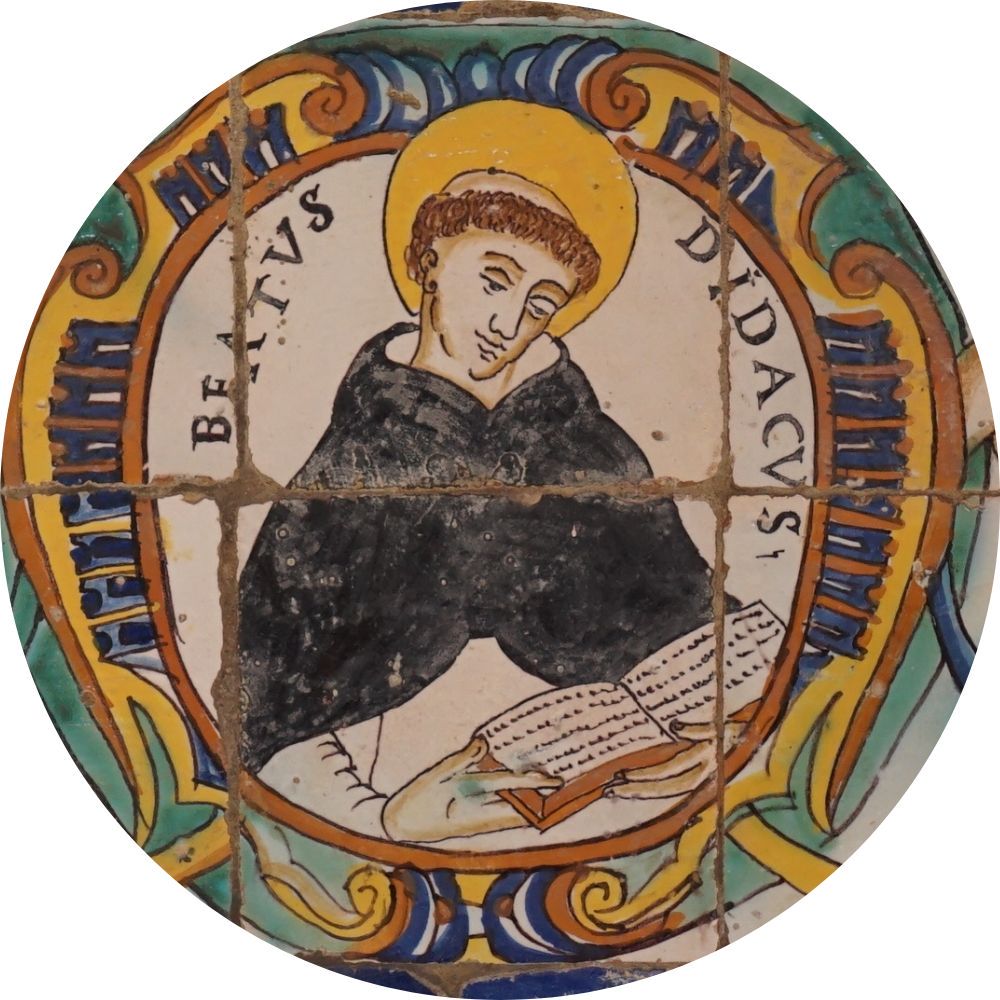Diego de Acebo
Diego de Acebo, bishop of Osma and co-founder of the order
(† 1207)
Little is known about Diego de Acebo (Latin Didacus d'Azebes). For certain he was Prior of the Cathedral Chapter of the Assumption of the Blessed Virgin Mary (Santa María de la Asunción) in Osma (El Burgo de Osma), where the Patriarch of the Order of Preachers, St. Dominic, was a canon. In 1201, Diego became bishop of Osma. This is also the year of the first mention of him in the sources. That's when he reformed the canonry in accordance with the Rule of St. Augustine. In 1203-1204, Bishop Diego and Dominic, as envoys of Castilian King Alfonso VIII (1155-1214), traveled to Denmark to secure the royal son Ferdinand, the hand of the Danish ruler. In 1204-1205 they made a second trip to get the girl, but the girl died in the meantime. On his way back, Diego went to Rome and asked Pope Innocent III for the opportunity to do missionary work among the pagans. The Pope did not grant him permission, but sent him to the south of France, to Languedoc, to take up the conversion of the Cathars together with his companion Dominic. It was Bishop Diego who played an important role in the foundation of the first nunnery for Dominican in Prouille in 1206. The first nuns were women converts from the Cathar heresy. Diego participated in the debates between Cathars and Catholics in Verfeil and Montreal. In 1207, in Pamiers, he attended a conference with the Waldenses headed by Durand of Huesca. After the conference, a group of Cathars returned to the bosom of the Catholic Church.Soon after, Bishop Diego was ordered by the Pope to return to his diocese. He died in Osma on December 30, 1207. His body was laid to rest in the cathedral there.
The joint missionary and preaching activities of Diego and Dominic led to the founding of the Order of Preachers, whose official establishment did not take place until nine years after the death of Bishop Osma. But it was while working among the Cathars that they developed new forms of fighting heresy, using educated itinerant preachers who lived in the evangelical counsels, especially poverty, and engaged in disputes with Cathars and Waldenses. This influenced the later character of the Order of Preachers, founded by St. Dominic. Some researchers claim that St. Dominic drew the theoretical basis from the findings of Bishop Diego while founding the order.
It is worth noting that even Bl. Jordan of Saxony, the successor of St. Dominic to the office of master general of the Order of Preachers, emphasized the role of Bishop Diego in the formation of the order. Later, however, the order's authorities moved in the direction of even erasing his influence in the formation of the first group of brother preachers from monastic history, who later gave rise to the order.
Bishop Diego enjoyed a cult following from the beginning, both in the Order and in the local Church in Spain, especially in his diocese. More than once in Dominican iconography, he was depicted in the habit of the Order of St. Dominic. You'll also sometimes find the term "beatus," or blessed, next to him, although his cult has never been officially approved by the Catholic Church.
Bibliography:
- Jordan de Saxoniae, Libellus de principiis Ordinis Prædicatorum, ed. H. Ch. Scheeben, [in:] Monumenta S.P.N. Dominici, Fasc. 2: Libellus de principiis Ordinis Praedicatorum. Acta canonizationis. Legendae Petri Ferrandi. Constantini Urbevetani. Humberti de Romanis, Rome 1935 (Monumenta Ordinis Praedicatorum Historica, 16), pp. 1-88.
- Dávila Gil González, Theatro eclesiastico de la iglesia y ciudad de Osma. Vidas de sus obispos, y cosas memorables de su obispado, [in:] id., Theatro eclesiastico de las ciudades e iglesias catedrales de España: vidas de sus obispos y cosas memorables de sus obispados, vol. 4, Salamanca 1618, pp. 29-31 (each part has separate pagination).
- Loperráez Corvalán J., Descripcion histórica del obispado de Osma: con el catálogo de sus prelados, vol. 1, Madrid 1788, pp. 187-192.
- Veen H.J. van, S. Dominicus, IV (Vervolg). Didacus en Dominicus, „Nederlands archief voor kerkgeschiedenis”, 6 (1908), issue 2, pp. 191-220, 6 (1909), issue 3, pp. 251-290, esp. pp. 251-258.
- Vicaire M.-H., Saint Dominique en 1207, „Archivum Fratrum Praedicatorum”, 23 (1953), pp. 335-345.

